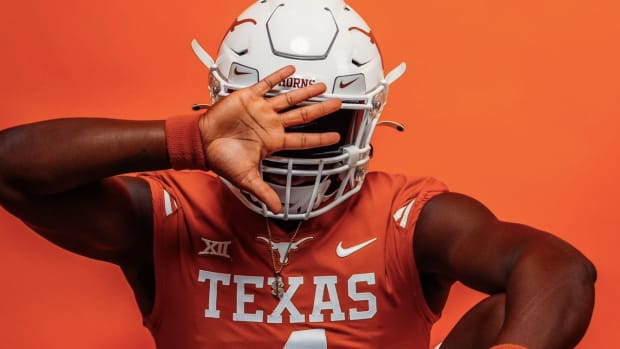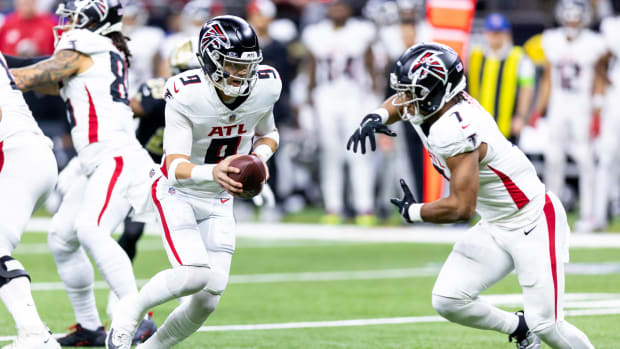Longhorns Three-and-Out Problems Easy to Dissect
The Texas Longhorns have a three-and-out problem in the second half of their last two losses.
Fortunately, it’s an easy problem to dissect. All you have to do is look at the numbers.
For the purposes of this piece, I looked at the Longhorns’ last two losses to Oklahoma and Oklahoma State. I examined all drives that led to a three-and-out in the second half. In all, there were eight drives to review. That data revealed problems that are as easy as first down, second down and third down.
First Down
On the Longhorns’ eight three-and-out drives, they turned to running back Bijan Robinson six times. That sounds like a good strategy if you’re ahead. After all, he’s averaging 6.3 yards per carry this season.
Not on those eight drives. The two defenses stuffed him. He gained 11 yards on six carries. Robinson averaged less than two yards per carry, and all but one of those carries was for two or fewer yards. He had a nine-yarder on the Longhorns’ last three-and-out drive against OSU. But his four-yard loss on a first down against OU drove down his average.
When the three-and-out started against OU, the Longhorns were up 38-20. When the three-and-outs started against OSU, the Longhorns were up 24-13. Yes, you want to protect the lead, and giving it to the powerful Robinson is a good call. But the Longhorns have to execute, too. And in these cases, they didn’t, and it sorely hurt what they could do on second and third downs.
Second Down
With an inability to move the ball on first down, the Longhorns faced slimmed-down options. Oddly enough, Texas turned to Robinson three times on second down. He gained six yards on those three carries, an average of two yards per carry.
Quarterback Casey Thompson took the other five plays. All were passes and he was efficient, completing four of the five. But, those passes gained only a total of nine yards. Plus, on two of those second downs, the Longhorns were operating at a deficit due to false start penalties.
These were high-percentage play calls. But when you’re already operating at second-and-long, you’re counting on the pass-catcher gaining some yardage. But the longest completion was a five-yarder.
Third Down
With the combined troubles on first and second downs, the Longhorns were operating with bad field position. On the eight drives, on average, the Longhorns were facing third-and-nine. It should be noted that against Oklahoma State, the Longhorns faced two of these third downs with manageable yardage — five yards or less.
But as Thompson completed 80 percent of his passes on second down, he completed none of his five attempts on third down. Not a one. Just one completion might have extended one of those drives.
Thompson found himself under duress, too. For the three drives in which he didn’t have an incompletion, one play ended in a sack and the other two plays ended with a combined loss of six yards.
So, when Longhorns head coach Steve Sarkisian says his team has to “finish games,” this is what he’s talking about. The Longhorns’ inability to hold the football for more than a few plays at a time in the second half the past two weeks has led to two straight losses.
And that’s a trend Texas has to put to an end now.
Want the latest in breaking news and insider information on the Longhorns? Click Here
Want to join in on the discussion? Click here to become a member of the Longhorns Country message board community today!




